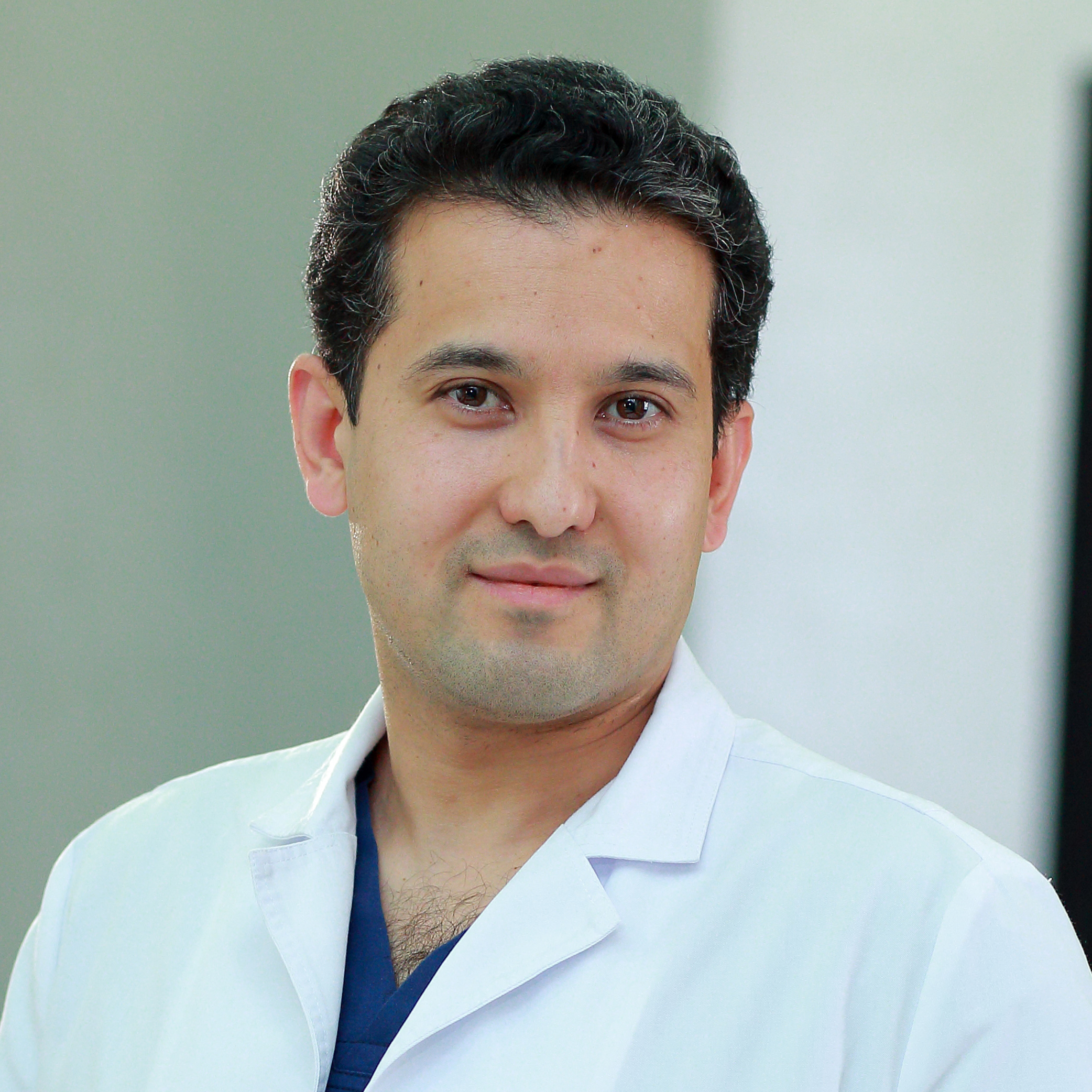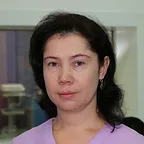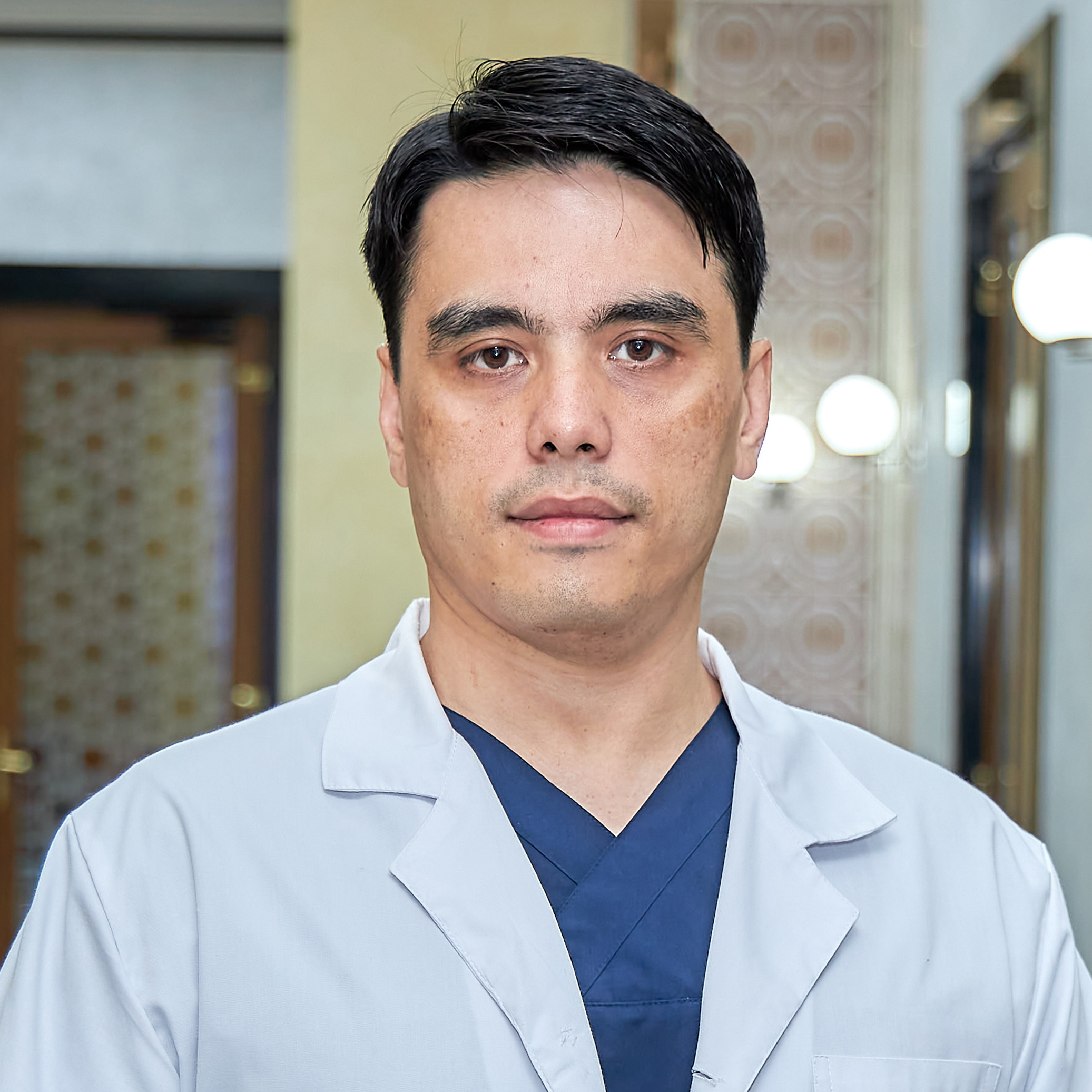DEPARTMENT OF RADIOLOGY and PET/CT DIAGNOSTICS
The Department of Radiology and PET/CT Diagnostics is equipped with modern equipment in the form of a multi-purpose general radiography and fluoroscopy system DuoDiagnost with analog-to-digital conversion, a digital mammograph Mammodiagnost DR, multi-detector computed tomographs Brilliance 64 and Brilliance i-ST 256, a magnetic resonance tomograph Achieva 3.0 Tesla - TX, positron emission tomography combined with CT (PET/CT) Ingenuity TF PET/CT from Philips.
Computed tomography (CT) today is the leading method for diagnosing many diseases of the brain, spine, lungs and mediastinum, liver, kidneys, pancreas, adrenal glands, aorta and pulmonary artery, heart and a number of other organs. X-ray computed tomography is currently the fastest growing technology in radiology. The transition from the 20th to the 21st century was marked by the second renaissance of computed tomography - the creation of a multi-slice technique - multislice computed tomography (MSCT).
Multislice computed tomography (MSCT) is the best method for diagnosing diseases of the lungs and skeletal bones. With the introduction of a contrast agent, CT allows one to obtain high-quality three-dimensional images of blood vessels and the heart, including coronary arteries and coronary artery bypass grafts. These studies do not require hospitalization or insertion of a catheter into the heart vessels.
Our clinic has 2 multi-slice spiral tomographs - Brilliance 64 PHILIPS and Brilliance i-CT 256 Philips, which carry out the following types of studies:
MSCT examination of the brain
MSCT examination of the paranasal sinuses
MSCT examination of the temporal bones
MSCT examination of orbits
MSCT examination of the facial skeleton
MSCT examination of the spine
MSCT examination of the chest organs
MSCT study of the coronary artery calcification index
MSCT examination of the abdominal organs
MSCT examination of the kidneys and adrenal glands
MSCT examination of the pelvic organs
MSCT examination of joints
MSCT examination of soft tissues
Quantitative CT (densitometry) of the vertebrae
MSCT angiographic study of the arteries of the neck and brain
MSCT angiographic examination of the aorta
MSCT angiographic examination of the abdominal cavity and pelvis
MSCT angiographic examination of the extremities
MSCT angiographic examination of the coronary arteries
MSCT of the upper and lower jaws (“dentition”)
MSCT of the larynx
MSCT of the upper respiratory tract with virtual bronchography
MSCT of the kidneys and urinary tract without contrast
MSCT of the abdominal cavity and pelvis with IV contrast
MSCT of the brain with contrast
MSCT of the kidneys and urinary tract with contrast and 3D reconstruction
Consultation with a radiologist, candidate of medical sciences, description and interpretation of tomograms based on the presented electronic images on CD
Magnetic resonance imaging (MRI) is a modern, safe (without ionizing radiation) diagnostic method that provides visualization of deep-lying biological tissues, widely used in medical practice, in particular in neurology and neurosurgery. MRI provides accurate images of all tissues of the body, especially soft tissue, cartilage, intervertebral discs and the brain. Even the smallest inflammatory lesions can be detected on MRI.
Magnetic resonance imaging scanner Achieva 3.0 Tesla -TX is an ultra-compact, actively shielded, superconducting magnet of a revolutionary next-generation design with a large field of view (50 cm). Thanks to the use of new technologies, the system provides us with all the capabilities to perform advanced whole-body studies using a field strength of 3.0 Tesla:
MRI of the brain
Brain MRI with tractography
MRI of the brain with IV contrast
MRI brain perfusion
MRI of the brain + angiography of the arteries and veins of the brain (non-contrast)
MPT of the pituitary gland with dynamic contrast
MRI of orbits, paranasal sinuses, inner ear
MRI of soft tissues of the neck
MRI angiography of the neck arteries
MRI of the cervical, thoracic, lumbosacral spine
MRI of soft tissues of the limb (one area)
MRI of one spine + IV contrast enhancement
Abdominal MRI
MRI cholangiography
MRI of the abdomen with IV contrast
MRI of the retroperitoneum
MRI of the pelvic organs
MRI of the pelvic organs with contrast enhancement
MRI of the external genitalia in men
MRI of the shoulder, elbow, wrist, ankle, knee, hip joints, foot
Breast MRI with IV dynamic contrast enhancement
Cardiac MRI (without contrast enhancement)
MRI of the heart with myocardial perfusion
Mammography is a special type of breast examination that uses low-dose X-rays. A mammography image (mammogram) is used to detect early stages of breast cancer in women who have no symptoms and to diagnose cancer if they have symptoms, such as breast lumps, pain, or discharge from the nipple.
Digital mammography is a system with semiconductor detectors that record ionizing radiation and convert it into electrical signals. Electrical signals create an image of breast tissue, which can be viewed on a computer screen or printed on a special film called a mammogram. Philips universal digital mammograph - MammoDiagnost DR, designed for screening studies, images with hardware magnification.
Mammography is performed in the first phase of the menstrual cycle (from 5 to 12 days, counting from the first day of menstruation). For menopausal women, images can be taken at any time.
Distinctive features of MammoDiagnost DR:
Low voltage in the tube is 19-32 kV. Amorphous selenium (aSe) flat panel digital detector with full field of view. The small pixel size of 85 microns gives high resolution mammograms. The device is equipped with automatic exposure control.
Specialized high-contrast X-ray film is used. X-ray dose control.
X-ray examination is the use of X-ray radiation to study the structure and function of various organs and systems in normal conditions and in pathology. Allows you to diagnose the disease, determine the localization and extent of identified pathological changes, as well as their dynamics during the treatment process. It is based on the unequal absorption of X-ray radiation by different organs and tissues. X-ray examination makes it possible to study the morphology and function of various systems and organs in the whole organism without disrupting its vital functions.
The Duo-Diagnost Philips multipurpose general radiography and fluoroscopy system introduces a two-in-one concept that combines the essential functions of fluoroscopy and radiography. It is possible to conduct X-ray examinations of all types, including contrast ones. Allows unhindered access to the patient. To ensure the highest image quality at the lowest possible dose, the Duo-Diagnost is equipped with the Dose Wise software package, which includes collimation to the last frozen image, dynamic image capture, and density-controlled tomography.
Survey radiography of the skull
Plain radiography of the paranasal sinuses
Survey radiography of one temporal bone according to Schüller
Plain radiography of the nasal bones
Plain radiography of the shoulder joints
Plain radiography of the forearm bones
Plain radiography of the scapula
Plain radiography of the elbow joints
Plain radiography of the wrist joints
Survey radiography of hands
Plain radiography of the chest organs
Plain radiography of the abdominal organs
Plain radiography of the pelvic bones
Plain radiography of the sacrum and coccyx
Plain radiography of the sacroiliac joints
Plain radiography of the knee joints
Plain radiography of the leg bones
Plain radiography of the ankle joints
Plain radiography of feet for flat feet
Plain radiography of the heel bones
Plain radiography of the cervical spine
Plain radiography of the thoracic spine
Survey radiography of the lumbosacral spine
Survey radiography of the spine with functional tests
Contrast radiograph of the esophagus in two projections
Contrast radiograph of the upper gastrointestinal tract (esophagus, stomach, small intestine)
Contrast study of the large intestine (irrigoscopy and irrigography) with double contrast
Excretory urography (survey radiograph of the urinary tract + intravenous urogram at 7 and 15 minutes)
Survey polypositional fluoroscopy of the OGK
Survey polypositional fluoroscopy of the OBP
PET/CT - Positron emission tomography, combined with computed tomography, is a modern high-tech radiological examination, widely used in oncological practice, allowing to visualize not only the morphology of organs, but also to determine the metabolism of various substances in organs and tissues.
Various radiopharmaceuticals are used to identify pathological cells. PET/CT of the whole body is performed with the introduction of the drug 18F-fluorodeoxyglucose (18F-FDG), a biological analogue of glucose labeled with a radionuclide label. Tumor tissue consumes glucose much more intensively than others, which makes it possible to register areas of drug accumulation using a PET scanner.
The radiopharmaceutical is produced in a PET cyclotron (BG-75, ABT Molecular Imaging, USA) and a radiochemical laboratory (TEMA Sinergie, Italy).
In addition, our center performs scans with 68Ga-PSMA-11 and 68Ga-DOTATATE, which allow us to visualize prostate cancer and neuroendocrine tumors. This isotope is produced in a gallium-germanium generator GalliaPharm Ge-68/Ga-68 Generator, Germany.
The diagnostic unit is represented by the most modern PET/CT (Ingenuity TF PET/CT, Philips, Netherlands) with 128 slices.
Main indications for 18F-FDG PET/CT
fundus gland (except for medullary cancer).
Mammary cancer.
Lung cancer (except carcinoids).
Thymus tumors.
Lymphomas.
Pancreatic cancer (except neuroendocrine tumors).
Esophageal carcinoma.
Stomach cancer.
Colon cancer.
Gallbladder cancer.
Liver cancer (except for well-differentiated hepatocellular cancer)
Ovarian cancer.
Cervical cancer.
Cancer of the uterus.
Kidney cancer (except for well-differentiated renal cell carcinoma, early forms of hypernephroid cancer).
Bladder cancer.
Testicular tumors.
Penile cancer.
Prostate cancer (low-grade cancer only).
Melanoma.
Multiple myeloma.
Search for the primary tumor.
Sarcomas.
Contraindications to 18F-FDG PET/CT
Pregnancy.
Breast-feeding.
Plasma glucose level is above 11.2 mmol/ml.
Preparation for 18F-FDG PET/CT
The day before the test, patients should avoid excessive physical activity and refrain from consuming alcoholic beverages and alcohol-containing medications.
During the cold season, on the day of the examination, the patient should be dressed in warm clothes, preferably ones that are a little warm.
There should be no metal objects (zippers, locks, jewelry, etc.) on the patient’s body and clothing.
The study is performed strictly on an empty stomach (especially if the patient is booked for the procedure before 15:00). Until you arrive at the department, you must drink unsweetened still water in any quantity (the more, the better). You can drink unsweetened tea and/or unsweetened coffee.
If a PET/CT scan is planned using iodinated contrast media, creatinine blood test results must be provided.
If you have ever had an allergic reaction to the administration of an iodinated contrast agent, be sure to report this when registering for the study.
If you have diabetes, be sure to inform about your illness when registering for the study, you will be enrolled in the morning. To obtain a high-quality image in patients with diabetes, the last meal and glucose-lowering medications (insulin, tablets) is possible only on the eve of the study (before 23:00 the previous day). The study is performed strictly on an empty stomach; you are allowed to drink unsweetened still water in any quantity (the more, the better). Before the administration of radiopharmaceuticals, the level of glucose in the blood plasma will be measured, the resulting indicator will be reported to the diagnostician, who will decide whether to conduct or cancel the study (in case of high values).
Bring with you
Passport.
Referral for research.
Discharge summaries, results of ultrasound, scintigraphy, CT and MRI along with disks (preferably for the last three months) and their copies, as well as other data that allows you to study the history of your disease in more detail.
The results of our research along with illustrations (if you visit us again).
Creatinine blood test results (only if contrast-enhanced PET/CT is planned).
Antihyperglycemic drugs (for patients with diabetes). Immediately after the test you will be able to eat and take pills.
Painkillers (if there is severe pain).
If you are undergoing a study at the expense of the compulsory health insurance fund (CHI), additionally
Main indications for PET/CT with 68Ga-PSMA
Prostate cancer.
Contraindications to PET/CT with 68Ga-PSMA
None.
The main tasks that PET/CT with 68Ga-PSMA solves
Diagnosis of biochemical relapse (with a PSA level of 0.2 ng/ml).
Staging of the tumor process (especially with PSA level ≥ 20 ng/ml, Gleason ≥ 7).
Evaluation of treatment effectiveness.
Preparation for PET/CT with 68Ga-PSMA
No special preparation is required for research with 68Ga-PSMA.
68Ga-DOTA-TATE (DOTA-TATE, labeled with gallium-68) is a radiopharmaceutical intended for the diagnosis of neuroendocrine tumors (NETs) having somatostatin seven-transmembrane-domain receptor (SSTR).
According to the literature, in 50-90% of cases, a significant increase in the number of SSTRs is observed on the surface of malignant NET cells. It is the overexpression of SSTR that is the basis for visualization of NETs in PET/CT using radiopharmaceuticals (RP).
According to foreign literature, the SSTR2a and SSTR2b subtypes are found in most NETs. This means that the most common radiopharmaceutical that can be used in PET/CT to visualize NETs is 68Ga-DOTA-TATE.
Main indications for PET/CT with 68Ga-DOTA-TATE and 68Ga-DOTA-NOC
Neuroendocrine tumor of the lung.
Neuroendocrine tumor of the thymus.
Neuroendocrine tumor of the stomach.
Neuroendocrine tumor of the duodenum.
Neuroendocrine tumor of the pancreas.
Neuroendocrine tumor of the small intestine.
Paragangliomas of the head and neck (less commonly, the abdominal cavity and pelvis).
Search for a primary neuroendocrine tumor (in this situation it is better to perform a study with two radiopharmaceuticals - 68Ga-DOTA-TATE and 68Ga-DOTA-NOC).
Attention! Dear patients, we inform you that there are
clinical situations in which the sensitivity of 68Ga-DOTA-TATE PET/CT is low. In these cases, it is advisable to conduct a study with another radiopharmaceutical - 18F-fluorodeoxyglucose (18F-FDG). Determine which radiopharmaceutical will be effective for your disease,
Preparation for PET/CT with 68Ga-DOTA-TATE
No special preparation is required for research with 68Ga-DOTA-TATE.
How is PET/CT performed?
1. On the day of the study, at the pre-arranged date and time, the patient arrives at the registration desk of the PET/CT building
2. At the reception desk, the patient fills out the necessary documents and answers the registrar’s questions.
3. Payment for the study is made at the cash desk located in the clinic building.
4. After payment and completion of registration, the patient is invited to a changing room. Next, they will be escorted to the treatment room, where the patient will receive intravenous administration of radiopharmaceuticals. The radiopharmaceutical injection is easily tolerated and you should not expect any pain or discomfort. After administration of the drug, the patient goes to the relaxation zone, where he is asked to take a comfortable horizontal position and rest for 60-90 minutes; 5-10 minutes after the administration of the radiopharmaceutical, the patient will be given bottled water along with an iodine-containing contrast agent.
5. The patient waits for the scan in the relaxation area (waiting time averages 60-90 minutes). While waiting, you need to drink some water and go to the toilet, which is located in the same room, several times.
6. From the patient room at the time calculated by the doctor, the patient is invited to the tomograph for scanning.
Attention! During the scan, you must be in a state of complete rest, breathing should be even, calm, and you cannot move. It is important to remember that any movement can affect the quality of the image. The time the patient spends in the tomograph depends on the patient’s height and the selected scanning volume. For example, scanning a “whole body” with a height of 165-170 cm using a PET/CT machine takes about 20-25 minutes.
7. After the scan, the patient is allowed to go home.
8. The results of the study are issued within 2 working days. Medical receptionists invite patients by telephone to issue results.
Attention! Dear patients, we remind you that immediately after the injection of radiopharmaceuticals you become a source of ionizing radiation, which means that contact with you is associated with receiving radiation exposure. Taking this into account, after the study you are advised to refrain from contact with small children and pregnant women.
X-ray therapy in the clinic named after Fedorovich, where a new X-ray therapeutic system Xstrahl 200 manufactured in Great Britain was purchased, which has more than 25 years of experience in providing high-quality X-ray equipment, first registered on the market of Uzbekistan (X-ray therapy in Tashkent).
The only X-ray therapy systems equipped with a built-in fractionated dose control system to ensure complete safety for your patients.
Xstrahl 200 ensures maximum effectiveness and comfort of treatment for every patient.
Thanks to the unique design of the system, the treatment of superficial skin diseases is painless and does not leave postoperative sutures.
The high speed with which treatment is carried out minimizes its impact on the patient’s daily life.
The range of movement of the emitter allows precise adjustments and positioning for each treatment area without compromising patient comfort.
Xstrahl 200 is equipped with a built-in dosimetry system.
Concerto software makes the treatment process clear and allows you to create detailed clinical records for each patient, and the ability to archive data.
To obtain a homogeneous beam, filters made of light and heavy metals are used.
To limit the irradiation field and make centration easier during radiotherapy, cylindrical or rectangular tubes are used, providing the skin-focal distance required for each individual patient.
Close-focus radiotherapy is an independent radical method of treating precancerous diseases (senile keratoma, Bowen's disease, cutaneous horn, leukoplakia, etc.), a number of degenerative inflammatory and hypertrophic skin diseases (Dupuytren's syndrome, plantar fibromatosis, keloid scars, warts and condylomas, dermatological diseases , including psoriasis, mycoses fungoides, eczema, neurodermatitis).
X-ray therapy can also be used for some nonspecific degenerative-dystrophic and inflammatory processes of the osteoarticular apparatus, accompanied by reactive inflammation of soft tissues and severe pain.

 English
English Русский
Русский O'zbekcha
O'zbekcha




